Think Small Revisited: Handheld Spectroscopy
Guest author John Coates describes handheld measurements performed using a palm-sized device that can be used either as an open-ended spectrometer or as a dedicated analyzer.

In the October issue of Spectroscopy, John Coates (1) described a miniaturized spectral sensing concept based upon a spectral engine. In that column, the idea of a miniaturized platform for spectral measurements was developed. It discussed how miniaturization can enable analysts to bring the measurement system to the sample, rather than vice versa. The focus was on development of in-line and on-line measurement systems for continuous monitoring. The topics covered were beyond the traditional process analytical applications and included unconventional thinking on in-line water measurements for environmental monitoring and public safety applications, applications in the wine and brewing industries, and medical and life science applications. They involved the fabrication of low-cost components as either a true spectrometer or spectral sensor on a chip. In volume, like all chip-based technologies, the cost of such devices can drop to a point where spectral measurements can be entertained in consumer applications and consumer-based products.

John P. Coates
In this column, the theme is expanded to include handheld measurements using a palm-sized device. This device provides the full spectral capability discussed in the earlier article, but with a slant toward making common analytical measurements at a personal level. It is a truly portable system functioning as a spectrometer and can be used either open ended or as a dedicated analyzer. As an analyzer, it can make use of "canned" standard methods that are available as Internet downloads or it can run user-developed methods. A method is defined as a recipe for measurement of a specific chemistry or a material property from a natural or induced chromophore (role of a reagent) and from the resultant spectral data followed by the necessary data conditioning and calculations. Another key element of any spectral analysis is how the sample is handled and optically interfaced to the system. The device in this column brings everything together in a single unit, where a complete analysis can be performed by a single-handed operation.

Emil W. Ciurczak is chief technical officer at Cadrai Technology Group (Bel Air, MD). He can be reached via e-mail at: emil@ciurczak.com
This column provides readers with an insight into how it is best to consider the development of instrumentation on a platform basis. By definition, platforms (such as the infamous IBM PC) are flexible, easy to customize, and can be applied to multiple applications — some previously not considered for spectroscopic analysis. The platform discussed leads into an affordable palm-sized measurement system. The hope is that readers will be encouraged to think beyond the traditional limits of spectroscopy; also, another byproduct of this thinking is to introduce a concept that will open doors into the educational system and into the home or consumer market.
By education and training, this author is an analytical chemist with a background in analytical methods development and use of instrumentation. Early involvements with computers (back in the mid-1960s) led to the expansion of applications by the processing of spectral data for material characterization and automated methods of analysis. Since the mid-1970s, the focus has expanded further to include the development and design of instrumentation and sensors. Drawing on all these experiences and skill requirements, the author has fulfilled some of his ambitions to develop a miniaturized spectral measurement system that is automated, easy to use, and readily customizable to meet the needs of a broad range of chemical, physical, and life science–based measurements.
The thought processes involved are reviewed here. The first consideration is the sample. For years, discussions have been going back and forth about what should come first, the instrument or the sample. Traditionally, the instrument is designed first and the sample handling is fitted in somewhere, either in a sample compartment or an extension of a sample compartment: some interface that is generated by "light pipes" or optical fibers. In all cases, the sample optical interface might be a compromise relative to light-coupling efficiency and convenience of use. In the current system under consideration, the sample and its method of introduction and optical interfacing were examined first, and the instrument was designed to interface with the sampling device.
The sample is drawn with a pipette-style assembly into a measuring chamber that has a retroreflective format. This enables convenient one-sided sample illumination, reducing the net physical pathlength. A 5–50 mm pathlength range is considered to be optimum for most visible and near infrared (NIR) measurements. Consideration for shorter pathlengths has been given for more optically dense media and will be implemented with time for applications in which dilution of the sample is undesirable.
The sample interface is designed for easy removal of the sample components and is produced from low-cost materials, making them disposable. The physical interface between the sample chamber and the spectral sensor is accomplished with nonconventional optics in which light guides, shrouded by a black absorbing material, generate a pseudocollimated light path.
Traditionally, scientific instruments evolved from benchtop boxes with a collection of control knobs, buttons, lights, and displays to relatively simple-looking boxes that are controlled via a personal computer. This is a good-news, bad-news scenario in some respects because using software to drive an instrument requires learning a user interface and understanding the interactions involved in different functions of the software. With modern Windows-based graphical user interfaces, this interaction has been simplified to some extent. The current generation of instrument users has grown up with this style of interface (while a few of us old-timers recall the simplicity of pushing a scan button). The very latest generation is more familiar with simple menu-driven pushbutton devices, such as used on a modern cell phone or an MP3 player. In designing a palm-sized device, one can think about these simple user interfaces, or the more complex interfaces of the modern smart phones, such as the Palm Treo (Palm, Inc., Sunnyvale, California) or the BlackBerry (RIM, Waterloo, Ontario, Canada). Going this latter route can result in a crowded and inconvenient user interface.
In the design of the current handheld device, a different philosophy was adopted, based on a hybrid approach. There can be many reasons why a spectrum is acquired or a handheld device is used to make an analysis. Spectra can be recorded to perform some form of comparison in which a visual interface to the spectrum is desirable. In such cases the interface of a handheld device has limited capability, and so an ability to upload the spectral data and to view the spectrum or perform data manipulations is important. For this type of operation, a simple set of operations to scan and store a spectrum is all that is required, and a simple push-button interface that activates a prescribed procedure is all that is necessary. Alternatively, as a true handheld analyzer, there is a need to select a predefined method that combines a set of operations from spectrum acquisition to the computation of a final result. The advantage of a true spectral sensor at this point is that many different methods can be performed by a single instrument, and one is not constrained to a limited set of wavelengths for a given measurement. In this scenario, the user interface is required to permit selection of the appropriate method, an operation that can call on the MP3 player approach. The final computed result can be displayed, in numerical or alphabetic form, on the same display used for the method selection.
Many of the traditional handheld analyzers offer multiple methods of analysis when the analyzer is obtained for a specific set of analyses. A common example here is the range of analyzer products offered for water analysis. Some of the more basic devices might offer a limited set of common analyses, while more sophisticated systems might offer up to 100 stored methods. Almost without exception, the methods used are related to the use of specific reagents and are manifestations of published standard methods, such as the USEPA methods used for water analysis. Such systems are very popular and serve an important role. In terms of how the methods are implemented, most are based upon a single measurement point, usually a wavelength that defines an absorption maximum, and one, or possibly two, reference (or baseline) points. Such an approach follows a simple Beer's law approach to the data evaluation in which the net absorption for the sample is compared with a standard calibration, which can be defined in terms of a coefficient (slope) and an intercept.
If the handheld device is designed to function as a spectrometer rather than a simple photometric measurement system, then one can perform any or all of the standard methods, whether they be for water analysis or any other predefined method. In addition, one can entertain other types of measurement in which more sophisticated methods of data extraction and manipulation can be performed. For example, data extraction involving functions other than simple peak position or height can be considered, such as peak area and derivative calculations. Once the critical spectral data are obtained, calibrations involving nonlinear functions, more than one analyte, or regression-based quantitative methods can be implemented. Finally, for some analyses, a 1:1 comparison to one or more stored standards might be a requirement, as in some quality control applications. Setting up such approaches normally requires a PC-based system for the development of the method, but once developed, the method can be offloaded into the handheld device for standalone operation. When the method is executed, it might outwardly appear as any other standard method, but within the system, full data-array-based operations are performed, yielding a result or a set of results.
In the manner described, the handheld spectral analyzer can offer similar functionality to standard handheld analyzers that perform standard methods. These can be made available as standard stock methods. However, with the degree of customization, the same device can be transformed into an analyzer or a comparator (spectral comparisons) for a host of other applications. Such applications can be made available, again in the form of stock methods, or as a user-configurable system. In essence, this approach provides a flexible tool that one day might be a water analyzer, and another day might be an olive oil analyzer.
To this point, the spectral range has been assumed to be in the visible, operating from 400 nm to 700 nm. A system operating in this range is not limited to absorption, and with some minor reconfiguration of the optical interface and a different configuration of the sample handling system, it is possible to consider the spectral sensing system for certain fluorescence-based applications.
Several options are available here, depending upon the light (excitation) source and the configuration of the detection system. Such a measurement system can service a wide range of applications involving different fluorophores, many popular for life science and forensic applications. Furthermore, the same type of sensor construction can be constructed for the NIR, in the region from 700 nm to 1100 nm. While this region is not as commonly used as the longer wavelength spectral regions, it can service a wide range of fluid-based applications featuring mixtures of organic compounds or water-based solutions. A common example is the measurement of the alcohol and sugar content of wines, as featured in the earlier article.
The Platform Concept — Transforming Ideas into Reality
The system described here is a prototype of a fully functional system to be introduced at Pittcon 2007. The data shown here are very preliminary, and are not indicative of the final quality or performance of the sensor. They are intended to demonstrate the ability of the system to generate a recognizable and workable spectrum, and they were produced on a functional system.
Some systematic noise is present in some of the data, as illustrated, especially at the higher absorption regions of the spectral data. The source of this noise has been identified and will not be present in a final system. It is important to recognize that the data presented were obtained as a single capture from the array, a process that took approximately 3 ms. In the final system, it is expected that the data acquisition time could be shortened to a tenth of this value, approximately 300 μs — essentially a real-time measurement. However, in a handheld device, such speed is seldom a requirement, but it is nice to know that the speed is available.
The product series will be called the i-Lab, from "individual laboratory instrument." The approach is to place the power of a laboratory instrument in the user's hand. The background to the approach is highlighted above, along with the philosophy for use and operation. Figure 1 provides a view of the series for 2007, with the visible (green), NIR (red), and fluorescence (lilac) models being illustrated. As illustrated, each unit is fully self-contained, and includes the disposable sampling head on the top of each. The tips themselves are also removable and the lengths are selectable. The part located on top of the unit is the removable "cell" unit, which is a retroreflective module that will provide optical pathlengths ranging initially from 5 mm to 50 mm.
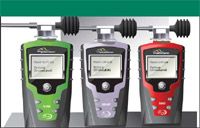
Figure 1: A new integrated spectral measurement system; palm-sized spectral sensor with sample transport.
An initial functional prototype, with a rough prototyping of the sampler system, is shown in Figure 2. The unit is designed for singlehanded operation (either left or right), and this includes filling and emptying with the bellows, the use of the controls, and the ejection of the sampler following the completion of an analytical cycle. With the anticipation that the system will be used for field applications, the body has a rugged and waterproof construction, with a rubber overmolded grip. When used standalone, the system is powered by three AA batteries, which are estimated to last for several months before needing replacement. When used in a laboratory or office environment, the system can be operated tethered by connection to a PC via the USB interface. When used in this mode, power is supplied via the USB cable.
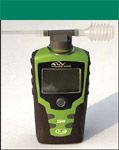
Figure 2: An operation prototype of the handheld spectral sensor.
A clear and easy-to-navigate user interface is important, and while the temptation is to include some form of keyboard, for standalone operations, this is not considered to be so important. A simple up and down arrow approach to option and method selection has been implemented. Examples of the user interface are provided in Figures 3 and 4, where the white backlight LCD is illustrated with operational instructions. In the case of the measurement cycle, this includes the acquisition of the dark current, the spectral background, and the final sample data acquisition. The speed of data acquisition is sufficiently fast for the visible spectrum (the NIR will take longer) that the entire average measurement cycle should not take any longer than a second or so.

Figure 3: Simplifying the user interface of the spectral sensors.
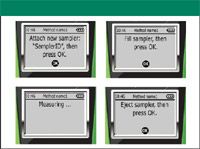
Figure 4: Making a measurement, from loading the sample to taking the measurement.
The example spectra shown in Figures 5–9 are illustrative of the nature of the final form of the spectral data, as acquired and as transferred back to a laboratory-, office-, or home-based PC. In terms of raw specifications, the final signal-to-noise specifications are undetermined at this time. For now, the presence of a low level systematic noise (to be removed) artificially reduces that value. The spectral resolution is in the range of 8 nm (average) for the visible system, and in the order of 11 nm for the NIR system. The photometric range for now is specified as 0–1.5 A, but it is expected to be closer to 0–2.0 A for the final systems. Currently, a 16 A/D range is in use, providing a digital count of up to 65,000 for the raw intensity measurements. Examples of intensity readouts are provided for single red and green LEDs, in Figure 5, and for a white LED, the main broadband light source, in Figure 6.
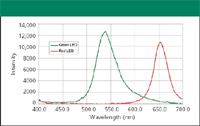
Figure 5: Spectral responses from LED light sources.
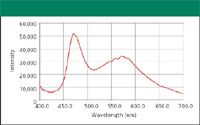
Figure 6: Broadband solid-state light source.
The spectral data shown in Figures 7–9 are illustrative of typical color-based measurements and of the role played by the system when collecting full spectral data. These data were collected using the single white LED light source shown in Figure 6. This source has relatively low output at the extremes of the wavelength range (400–450 nm and 650–700 nm) and is responsible for amplifying the systematic noise component referenced earlier. In the final form, the system will feature a composite light source consisting of the white LED combined with selected individual LEDs that will boost output in the regions of low output. Optimizing software will level the outputs of the composite LED. The benefits of using LEDs as light sources are obvious in terms of ruggedness, lifetime, and low power consumption. Bearing this in mind, a composite LED source also will be used for the NIR version of the system.

Figure 7: Adaptation to standard measurement methods; example, residual chlorine in drinking water.
At the time of introduction, the system will be complete in its most basic form, as described here. Future enhancements, due to be completed later in 2007, will include a graphical display of spectra on the built-in LCD (the LCD is bitmap addressable), a wireless interface, and GPS. The process version described in the earlier publication (1), for continuous monitoring, will be available in late 2007 or early 2008, and in its basic form it will use a CAN Bus interface and will be produced also (with the help of a third party) in an intrinsically safe (IS) package.
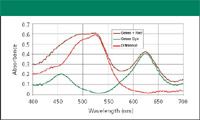
Figure 8: Continuous spectral data enabling multicomponent analysis.
Applications of a Handheld Spectral Sensor
The range of applications of an analytical instrument that fits in the palm of your hand is very large, especially when the system includes the sample and data handling. Taking these considerations into account, and with out-of-the-box thinking, such a system can now be considered for many applications that would not be practical based upon features (or lack of) or cost. Three simple applications are shown in Figures 7–9.
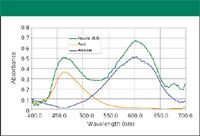
Figure 9: Property measurements: the measurement of pH.
It is expected that the system will have appeal for water monitoring applications, from the water source (stream, river, lake, reservoir, or well), to water purification, to the public water distribution system (public safety), through to the incoming water supply in public buildings, offices, and the home. Also, there are many intermediate considerations for water analysis, including industrial process water, water used in cooling systems, and industrial runoff and effluent control. From an analyte perspective, this can include traditional methods, such as the measurement of residual chlorine in drinking water (Figure 7), methods for runoff of fertilizers and other ground contaminants (nitrate, phosphate, ammonia), heavy metals (lead, mercury, copper, chromium [VI]), as well as biological materials and toxins. In the latter case, methodologies that use the fluorescence detection version of the system will be put in place.
When one uses a full spectrum approach to a measurement, there is a wide range of possibilities of how the system can be used. Many natural and artificially induced colors can exist in a wide variety of chemical systems. Many times, a number of these coexist. Figure 8 is a simple illustration with some simple dyes. A green dye is mixed with a red dye. The green dye in itself is a composite of blue (λmax ~625 nm) and yellow (λmax ~460 nm) dyes. The composite spectrum of all three dyes is shown as well as the computed difference spectrum showing the isolated red component, itself with a multiplet structure, with the primary λmax ~525 nm. The message here is that complex systems can be represented and analyzed. The integrated software (as well as the PC-based software) is intended to provide access to the data from such complex chemical systems, and full multicomponent capability will be available.
This latter statement is important because it opens the door to evaluating a broad range of natural products, such as olive oils and other natural color food products, to manufactured products that contain multiple ingredients, each with their own spectral contributions. As noted earlier, this is not restricted to the visible region, and the NIR-based system will provide extended coverage to include noncolored ingredients. In some processes, one might want to study a changing equilibrium, where an ingredient changes from one state to another, and where distinct chromophores are present for initial, intermediate, and final states. An acid-base indicator is a good example of this: many natural products exhibit such changes in color. Optical measurement in pH is not a new idea, but it is particularly easy when one has full access to the spectrum. In the case illustrated (Figure 9), an aquarium testing indicator is studied from the nominal neutral (which is around a pH of 6.8 in this case) to the extremes of free acid (λmax ~465 nm) to free base (λmax ~600 nm). With calibration of intermediate values, the fine control of pH balance around the neutral value can be accurately determined and monitored. Traditional pH electrodes do not function well at the extremes of the pH range (or in nonaqueous media). However, the spectral measurement system as illustrated can be calibrated to handle the extreme ranges, as well as certain nonaqueous situations.
What Is the Message?
A handheld measurement system is not anything new. In fact, handheld analyzers, based upon optical spectral measurements, have been around for decades. Measurement systems have existed for a long time now for water quality measurements, for the safety of swimming pool water, and for clinical and personal health measurement systems, to name just a few. What this article is about is a paradigm shift. Yes, this is a horribly overworked cliché, but once in a while it has actual meaning. That is what is intended here. The message is that if one focuses on a platform concept, rather than a specific instrument type or a specific end application or market, one can end up with a power tool that can be applied to numerous applications. This is particularly the case if you can place the tool in the palm of your hand, and if buying the tool does not break the bank.
The latter point is extremely important because it influences directly the scope and magnitude of the final end-user market. As a sidebar, the concept discussed in this column has been in the mind of this author for more than a decade. What is critical when developing a technology is obtaining sufficient funding to enable the concept to be developed and eventually demonstrated. Unfortunately, in this post-1990s era, it is next to impossible to gain funding for a concept. Analogies are important, and one has to wonder if Steve Jobs or Bill Gates would have succeeded if they went to get technology investment today. When you think about it, the question always is "What's the Market?" and "How many are you going to sell? and "How quickly?" Both Jobs and Gates developed platforms; both are visionaries. Imagine them saying this technology will eventually replace music records and this operating system will be on mobile telephones. This approach does not work in today's technology investment market.
In no way is this discussion meant to imply that the handheld spectral sensor covered in this article is in the same league as a credit card–sized MP3-type music player or the Windows operating system. However, like these two systems, the spectral sensor features important enabling technology and both are designed around a platform concept. Like a personal computer, this spectrometer platform is scalable. If one thinks out of the box, and one considers how powerful spectroscopy can be for solving a broad range of modern applications, this platform approach has significant potential.
The platform discussed provides a full spectral measurement system in a convenient package and at a price that fits most people's pockets. This is important because now everyone in a laboratory can have their own personal spectrometer, field workers can perform important analyses without the need to send samples back to the laboratory, and it is now possible to consider doing spectroscopy in the classroom. This point is very important because today we find fewer people being involved in spectroscopy. However, if one can integrate spectroscopy conveniently and cost effectively into a school's science curriculum, then there is a chance that we can stimulate the interest in spectroscopy at an early age. For example, in a fifth-grade science lesson, there are many measurements that can be made to illustrate the science (whether it be physics, biology, or chemistry) and to introduce young people to sensors and instrumentation.
Conclusion . . . and Things to Come
This column has gone one step further than the original column (1) by introducing the spectral engine–based platform concept into a practical measurement system. One of the messages in the original article was taking the measurement to the sample, rather than the norm. Unlike common handheld analyzers, this approach provides a fully operable spectral measurement device. The system can be configured as an analyzer, but instead of being a rigidly fixed device, the system is user configurable. That is the benefit of having an open-ended spectrometer. As an analyzer, the system is fully portable; however, as a spectrometer, the device can be connected to a PC and can have the flexibility of a traditional laboratory instrument. Methods can be developed and tested on the PC and can be downloaded to the handheld device. In the opposite direction, spectra can be measured and uploaded to a fully configured spectral manipulation package.
Currently, as covered in this column, the spectral sensor operates in the visible spectral region from 400 nm to 700 nm. In the current configuration, the platform is adapted toward liquids, where the sample is drawn into a disposable sampler. Future configurations will include a dipping interface (expanding the concept of the smart stirrer) and a surface measurement version for liquids, pastes, and solids. From a configuration point-of-view, a fluorescence-based system is not so different from a Raman system, and many of the performance requirements are similar. With this in mind, an expansion into Raman is also under consideration.
Finally, the spectral region covered in this column can be summarized as being in the realm of UV-visible-NIR spectroscopy. When viewed as a palm-sized device, this important region of spectroscopy opens many new doors for applications that would never be considered for spectral measurements. Another important region for spectral measurements is the mid-infrared (MIR). MIR opens additional doors, and provides solutions that are closer to Star Trek's infamous tricorder. Watch this space for future discussions in this direction within the next 6 months.
John P. Coates is principal consultant for Coates Consulting (Newtown, CT) and is with microSpectral Sensors (Wilton, ME). www.microspectralsensors.com
References
(1) J.P. Coates, Spectroscopy 21(10), 20–25 (2006).

A Proposal for the Origin of the Near-Ubiquitous Fluorescence in Raman Spectra
February 14th 2025In this column, I describe what I believe may be the origin of this fluorescence emission and support my conjecture with some measurements of polycyclic aromatic hydrocarbons (PAHs). Understanding the origin of these interfering backgrounds may enable you to design experiments with less interference, avoid the laser illuminations that make things worse, or both.
Raman Microscopy for Characterizing Defects in SiC
January 2nd 2025Because there is a different Raman signature for each of the polymorphs as well as the contaminants, Raman microscopy is an ideal tool for analyzing the structure of these materials as well as identifying possible contaminants that would also interfere with performance.
Portable and Wearable Spectrometers in Our Future
December 3rd 2024The following is a summary of selected articles published recently in Spectroscopy on the subject of handheld, portable, and wearable spectrometers representing a variety of analytical techniques and applications. Here we take a closer look at the ever shrinking world of spectroscopy devices and how they are used. As spectrometers progress from bulky lab instruments to compact, portable, and even wearable devices, the future of spectroscopy is transforming dramatically. These advancements enable real-time, on-site analysis across diverse industries, from healthcare to environmental monitoring. This summary article explores cutting-edge developments in miniaturized spectrometers and their expanding range of practical applications.